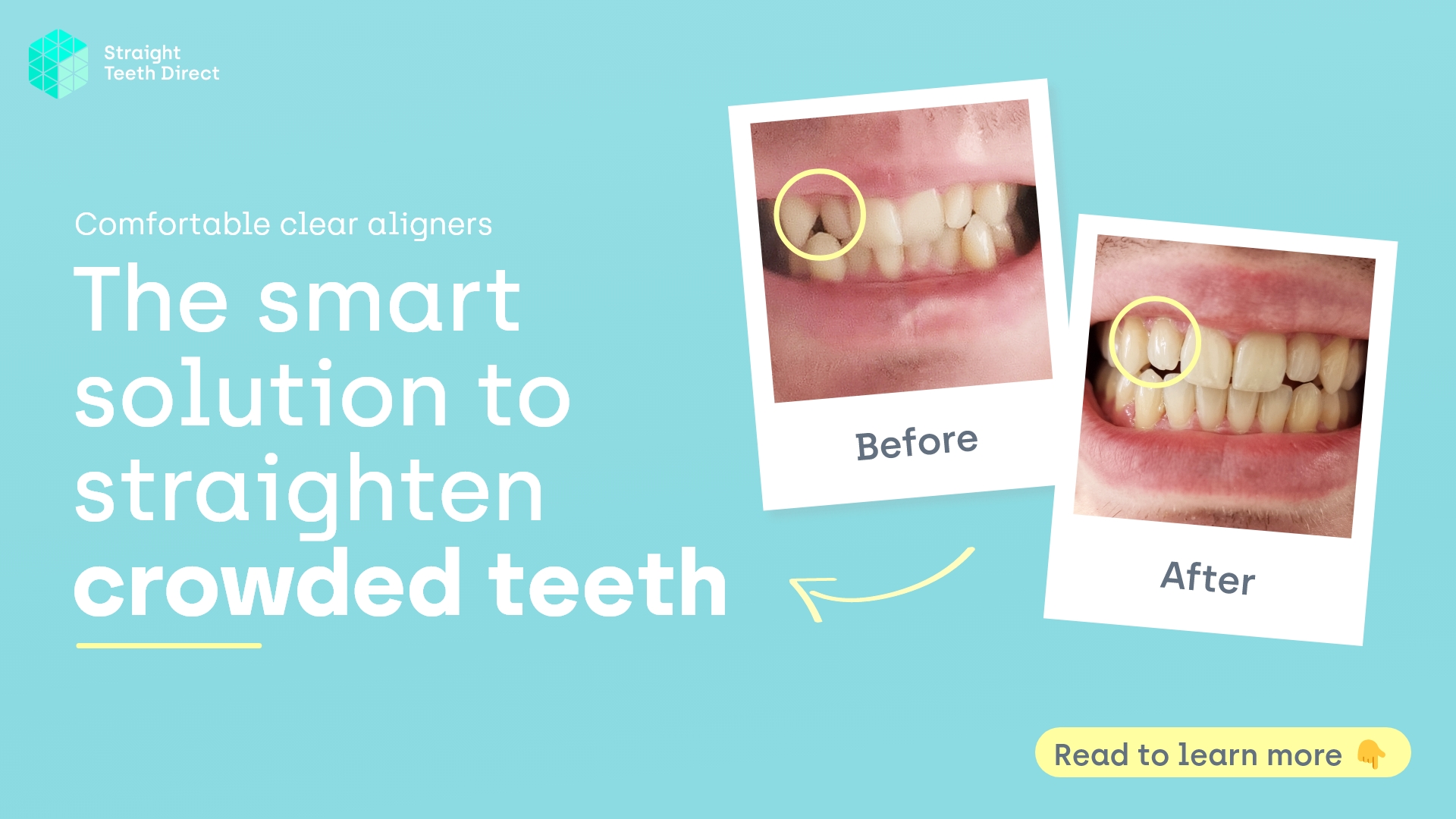
Clear Aligners: the smart solution to straighten crowded teeth

Compared to our American counterparts, we Europeans have endured a reputation of having bad teeth, but the real facts don’t match up to the stereotype. According to the Organisation for Economic Co-operation and Development (OECD), the top European countries with the healthiest, most complete set of adult teeth are Germany and the UK, closely followed by Denmark, the Netherlands and Switzerland. (The US falls behind, with an average of 1.2 missing or decayed teeth per adult.)
Crowded teeth might seem like they’re a fact of life, but there are record numbers of people accessing orthodontics to transform their smile. Many of us are conscious of how our teeth look, but crooked or misaligned teeth are often a result of hereditary conditions and normal adult development – it’s difficult to prevent but possible to treat.
Why do you have crowded teeth in the first place?
Overcrowding and crookedness can be seen as soon as the teeth start to develop, sometimes in children as young as five. As we get older and grow, our teeth and jaw follow suit, but that process doesn’t always run completely smoothly. When people use aligners to correct crookedness in later life, the simplest explanation for what they do is create space for the teeth.
Some causes of crooked, crowded teeth:
- Childhood myofunctional habits, such as thumb-sucking, mouth-breathing and reverse swallowing.
- Impacted teeth, or teeth that haven’t fallen out naturally.
- The jaw is too small to fit all the adult teeth in a straight, neat line.
- The natural shape of the jaw, including overbites and underbites.
Why clear aligners are so smart
Clear aligners are great for treating crowded teeth in particular, because they move the teeth, create space between them which is sorely needed, and then use that space.
In the picture below you can see an example of overcrowding and crooked teeth as a result of a narrow jaw. There isn’t enough space for the lower six teeth to sit side by side.
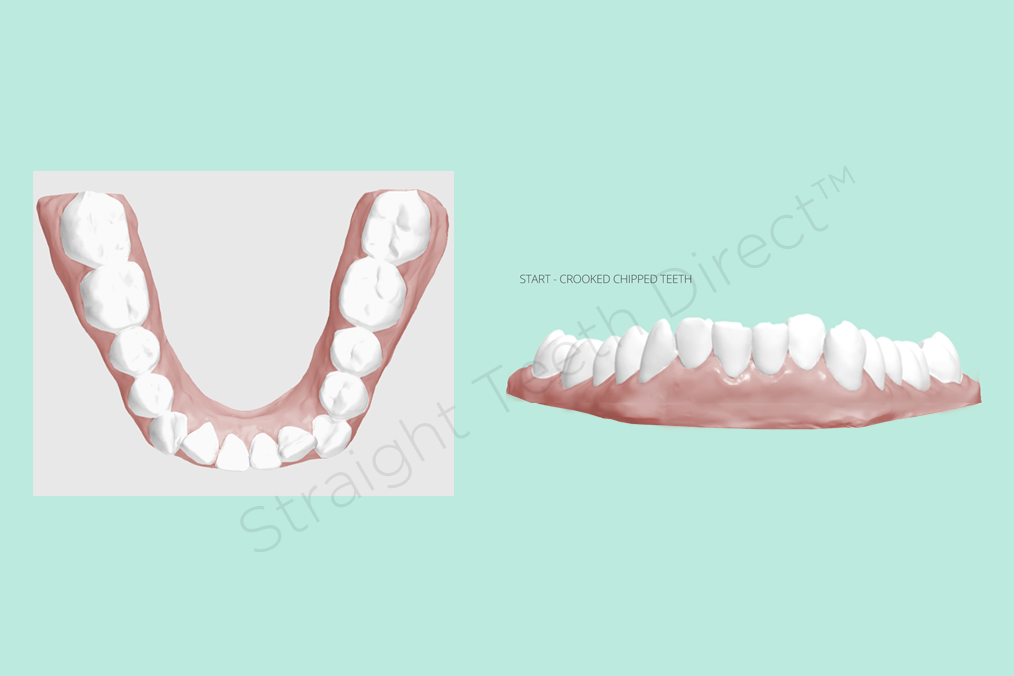
To straighten these teeth, the first step would be to widen the arch. Currently the teeth fit tightly, but they want to spring out slightly causing expansion to occur. Small spaces will open up between the teeth, which is the desired result.
These clear aligners would be worn for two weeks at a time, with each aligner working to create more space for the formerly crooked teeth to be moved into. The lower left lateral incisor, which is circled, moves down into position. Clear aligners use the space available and push the tooth down.
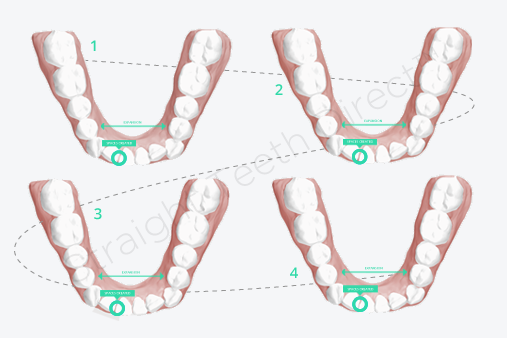
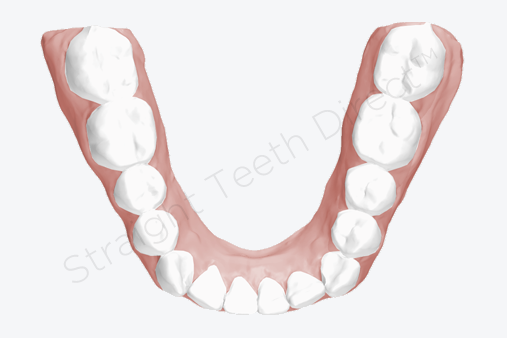
The finishing touches
After clear aligner treatment, the teeth are now in position (see the image above). The smile can be improved further by using cosmetic contouring or bonding to fix the chipped edges.
Sometimes, teeth that have been treated and re-aligned can still appear crooked because of uneven teeth edges. The actual alignment of the teeth is perfect, but the appearance can be deceiving. You can see an example of how cosmetic bonding can make that dramatic change in the images below.
BEFORE & AFTER
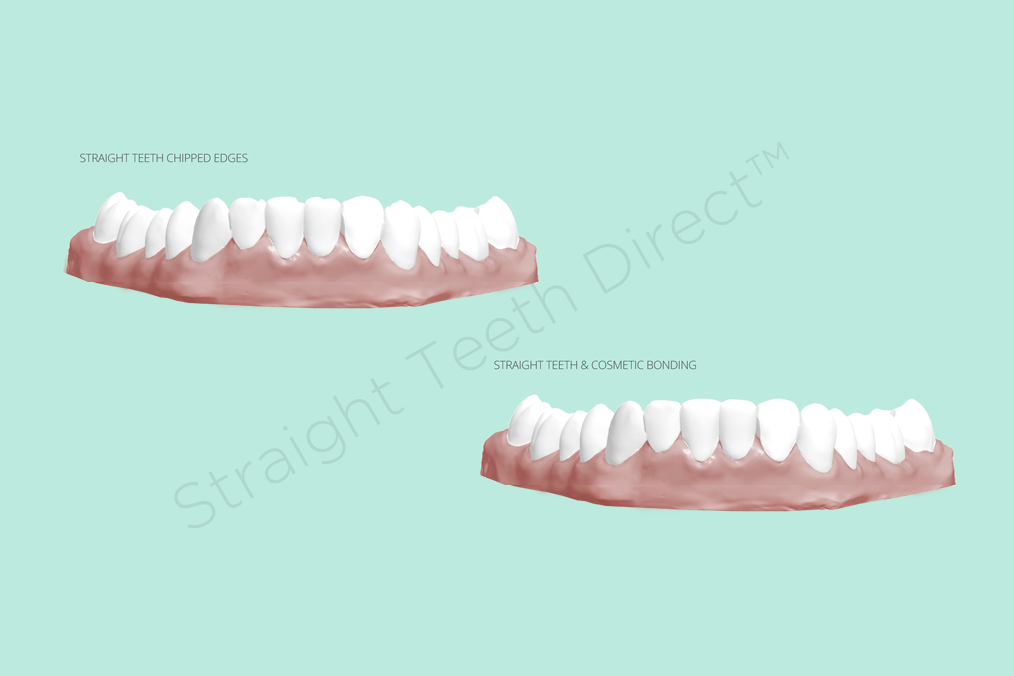
Are you looking for solutions to fix your crooked our crowded teeth? Start your free e-consultation to find out if you’re suitable for affordable, smart clear aligners.

Still thinking about it?
Fill in your email to receiveyour free guide!


















